-

Ron Goldfarb
Affiliation: National Institute of Standards and Technology (NIST), Boulder, Colorado
Bio: Ron works at the National Institute of Standards and Technology (NIST) in Boulder, Colorado, USA. His research is in magnetic metrology, magnetic nanoparticles, and superconductor losses. He was the leader of the NIST Magnetics Group and was the chief editor of the Journal of Research of NIST. He was the editor-in-chief of IEEE Transactions on Magnetics, was the founder and chief editor of IEEE Magnetics Letters, and led the establishment of IEEE Transactions on Quantum Engineering. He is a Fellow of the IEEE and is currently the president of the Magnetics Society.
Title: You Need a Story
-

Andrew D. Kent
Affiliation: New York University
Bio: Andrew Kent is a Professor of Physics and the Founding Director of the Center for Quantum Phenomena at New York University. He received a B.Sc. with Distinction in Applied and Engineering Physics at Cornell University and his Ph.D. from Stanford University in Applied Physics. His research interests are in the physics of magnetic nanostructures, nanomagnetic devices, and magnetic information storage. Dr. Kent is a Fellow of both the American Physical Society (APS) and the Institute of Electrical and Electronics Engineers (IEEE). Kent has received numerous awards and honors, including an Honorary Doctorate from the University of Lorraine, France (2013), the French Jean d'Alembert Research Fellowship (2017), and appointments as Professor at the University of Lorraine in 2018 and 2023.
Title: Spintronics with Magnetic Tunnel Junctions: From Fundamental Device Physics to Emerging Memory Technologies
Abstract: As society demands faster, smaller, and more energy-efficient technologies, new approaches to storing and manipulating information are required. Spintronics—an area of research that uses the spin of the electron, in addition to its charge—offers a promising path forward. One of the most impactful developments in this field is the ability to control magnetization using spin-polarized electric currents. Specifically, spin-transfer torques—where the angular momentum carried by an electrical current can exert a torque on a magnetic layer—enable efficient and scalable switching of magnetic states in nanoscale devices. This talk will introduce the physics of spin-transfer torque and its implementation in magnetic tunnel junctions (MTJs)—layered structures composed of two ferromagnetic conductors separated by a thin insulating barrier. MTJs exhibit large magnetoresistance and are the core element of spin-transfer torque magnetic random access memory (STT-MRAM), a promising non-volatile memory technology now being commercialized by the semiconductor industry. I will explain the mechanisms that govern torque generation and magnetic switching, and discuss how spin-orbit torques provide an alternative means of control. The talk will also discuss key materials challenges and recent advances in material and device engineering that have enabled reliable switching at low current densities.
References:
[1] A. Brataas, A. D. Kent and H. Ohno, “Current-Induced Torques in Magnetic Materials”, Nature Materials 11, 372 (2012); doi:10.1038/nmat3311
[2] A. D. Kent and D. C. Worledge, “A new spin on magnetic memories,” Nature Nanotechnology 10, 187 (2015); doi:10.1038/nnano.2015.24
-
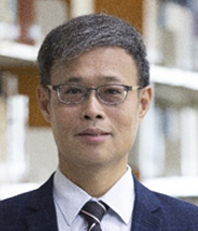
Min-Fu Hsieh
Affiliation: National Chen Kung University, Taiwan
Bio: Min-Fu Hsieh received his Ph.D. in Mechanical Engineering from the University of Liverpool, U.K., in 2000. He is currently a Distinguished Professor in the Department of Electrical Engineering at National Cheng Kung University (NCKU), Taiwan, and served as Deputy Vice President for Research and Development at NCKU from 2023 to 2025. His research focuses on electric machine design, drive systems, and mechatronics, with an emphasis on advanced motor technologies and their practical applications. He has contributed extensively to academia–industry collaborations and research initiatives. Prof. Hsieh has played an active role in the IEEE community. He has served multiple times as Publication Chair and Guest Chief Editor for the IEEE International Magnetics Conference (INTERMAG). He is currently an Editor for IEEE Transactions on Magnetics and an Associate Editor for IEEE Transactions on Industry Applications, both for more than a decade. Within the IEEE Magnetics Society, he serves as International Relations Coordinator, responsible for promoting global collaboration with sister societies. In recognition of his academic accomplishments and international contributions, he was selected as a 2025–2026 IEEE Magnetics Society Distinguished Lecturer.
Title: Artificial Intelligence-Assisted Design and Fault Diagnosis of Electric Motors for Green Transportation
Abstract: The impact of artificial intelligence (AI) is rapidly growing and is increasingly pivotal across a wide range of disciplines, from innovative scientific research to practical, everyday applications. The powerful capabilities of AI—spanning data analysis, predictive modeling, and beyond—equip researchers and professionals with unparalleled tools to tackle complex problems, push the boundaries of scientific discovery, and elevate productivity to unprecedented levels. This talk will explore the integration of AI in diagnosing motor faults and advancing motor design, highlighting how AI can significantly enhance the reliability and performance of electric motors in green transportation. It will delve into the use of machine learning and deep learning models to predict and prevent motor failures (e.g., inter-turn short-circuits, demagnetization, and bearing faults) [1]-[3], which is essential for ensuring safety and reliability in transportation and industry. Furthermore, the talk will highlight AI-driven innovations in motor design [4], such as noise-reduction, offering insights into how AI can revolutionize traditional motor systems and contribute to ongoing improvements in predictive maintenance and design practices.
References:
[1] A. Mohammad-Alikhani, B. Nahid-Mobarakeh, and M. F. Hsieh, “One-Dimensional LSTM-Regulated Deep Residual Network for Data-Driven Fault Detection in Electric Machines,” IEEE Trans. Industrial Elect. vol. 71, no. 3, pp. 3083-3092, Mar 2024.
[2] A. Mohammad-Alikhani, B. Nahid-Mobarakeh, and M. F. Hsieh, “Diagnosis of Mechanical and Electrical Faults in Electric Machines Using a Lightweight Frequency-Scaled Convolutional Neural Network,” IEEE Trans. Energy Conver., early access, Nov 2024, doi: 10.1109/TEC.2024.3490736.
[3] K. J. Shih, M. F. Hsieh, B. J. Chen, and S. F. Huang, “Machine Learning for Inter-Turn Short-Circuit Fault Diagnosis in Permanent Magnet Synchronous Motors,” IEEE Trans. Magn., vol. 58, no. 8, 8204307, Apr 2022.
[4] M. F. Hsieh, L. H. Lin, T. A. Huynh, and D. Dorrell, “Development of Machine Learning-Based Design Platform for Permanent Magnet Synchronous Motor Toward Simulation Free,” IEEE Trans. Magn., vol. 59, no. 11, 8204307, Aug 2023.
-
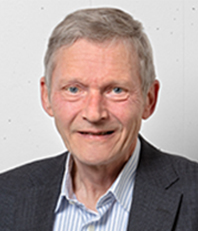
Günter Reiss
Affiliation: Bielefeld University, Bielefeld, Germany
Bio: Günter Reiss received the Diploma and Ph.D. degrees in physics from the University of Regensburg, Regensburg, Germany, in 1984 and 1989, respectively. Following his post-doctoral work at the University of Regensburg and the IBM T. J. Watson Research Center, Yorktown Heights, NY, USA, he joined the Leibniz-Institut für Festkörper- und Werkstoffforschung (IFW), Dresden, Germany, where he was the Head of the Thin Film Section from 1992 to 1997. In 1997, he accepted a full professorship at Bielefeld University, Germany. In the physics education program at Bielefeld University, he has developed courses that connect magnetism with semiconductor physics and modern microelectronics. His main research interests include new materials and devices for spin electronics and applications in memories and sensing systems. Dr. Reiss received the Gaede Award of the German Vacuum Society in 1994 and the Distinguished lectureship of the IEEE Magnetics Society in 2025. He served in committees of the IEEE Magnetics Society and the German Research Foundation (DFG) and co-organized a spring meeting of the German Physical Society (DPG).
Title: New Materials for Charge and Spin Transport in Magnetic Heterostructures and their applications
Abstract: Magnetic heterostructures are key devices for spin electronics1. Their preparation requires a combination of thin film deposition with sub-angstrom control, field-annealing, and nanopatterning. If fully functional, they can help fundamental research on new materials2 and effects3 as well open applications in sensors, memory, logic, and oscillators. An introduction will present the basic magnetoresistive effects and their applications. We then discuss a specific application example of magnetic sensors developed as a part of a diagnostic assay to detect the stray field of magnetic (nano-) particles that can be loaded with biomolecules4. The third part will discuss altermagnets as novel materials that are promising for sensing or memory devices. These materials (such as RuO2 or Mn5Si3) are at present intensively investigated due to their antiferromagnetism combined with a potentially spin-split electronic band structure and related spin currents. When sandwiched with ferromagnets (Ni80Fe20), an analysis based on the 2ω method shows the presence of torques in accordance with a spin current at the interface. When replacing the ferromagnet by a heavy metal (Pt), a spin current from the Pt into the altermagnet can switch the magnetic order in the altermagnet, which can be detected by the planar Hall effect. When integrated with an MgO tunnel barrier and a ferromagnetic counter-electrode, signatures of a tunneling magnetoresistance strongly depend on the bias voltage. The talk will close with an outlook for this new material class.
References:
[1] A. Hirohata et al., “Review on spintronics: Principles and device applications”, J. Magnet. Magnet. Mater. vol 509, Sept. 2020, Art. no. 166711
[2] M. M. Qaid et al., “Tunable Gilbert damping and magnetization in B-rich Fe1−xBx Thin Films,” Phys. Rev. Appl., vol. 8, Mar. 2024, Art. no. 034404.
[3] P. Bougiatioti et al., “Quantitative disentanglement of the spin seebeck, proximity-induced, and ferromagnetic-induced anomalous Nernst effect in normal-metal–ferromagnet bilayers,” Phys. Rev. Lett., vol. 119, Nov. 2017, Art. no. 227205.
[4] A. Elzwawy et al., “Current trends in planar Hall effect sensors: Evolution, optimization, and applications,” J. Phys. D, Appl. Phys., vol. 54, Jun. 2021, Art. no. 353002.
-

Randy Dumas
Bio: Randy received his Ph.D. in 2009 from the University of California, Davis on the topic of reversal mechanisms in magnetic nanostructures. As a postdoctoral fellow at the University of Gothenburg, Sweden he studied next generation magnetic and spin wave based data storage and processing paradigms. Randy joined Quantum Design in August 2016 and his specialty lies primarily in magnetic characterization of both fundamentally interesting and technologically relevant materials.
Title: Measurements in Magnetism
Abstract: This talk will provide a broad survey of various magnetic measurement techniques that not only span bulk-to-nanometer length scales, but also DC-to-THz frequencies. The goal of this talk will be to provide a fundamental understanding of how each technique works as well as their pros and cons. Where relevant, commercial equipment comparisons will be provided. Topics will include: Vibrating Sample Magnetometry (VSM), Superconducting Quantum Interference Device (SQUID) based magnetometry, AC Susceptibility, Broadband Ferromagnetic Resonance (FMR), Magneto-Optical Kerr Effect (MOKE), Magnetic Force Microscopy (MFM), Scanning NV-center Microscopy.
-
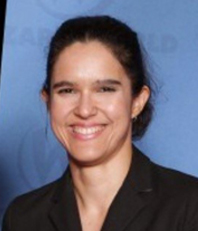
Stephanie Hernandez
Bio: Stephanie obtained her Ph. D. in Electrical Engineering from the University of Minnesota in 2010. Her graduate research involved modeling magnetic recording media and spin-torque based structures. After graduate school, she started working for Recording Head Operations at Seagate Technology in Bloomington, Minnesota as a read transducer designer. In 2015, she joined Seagate Research in Shakopee Minnesota, to model advanced Heat Assisted Magnetic Recording. Now, she is the Sr. Director of the Data Storage and Memory Devices group at Seagate Research. This team is responsible for conducting research on advanced hard drive and other storage and memory technologies through experimentation and physics-based simulation.
-
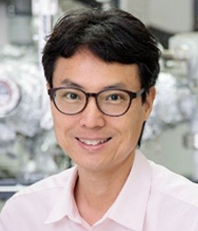
Hyunsoo Yang
Affiliation: National University of Singapore, Singapore
Bio: Hyunsoo Yang is a Professor in the Department of Electrical and Computer Engineering, National University of Singapore (NUS), working on various magnetic materials and devices for spintronics applications. He worked at C&S technology and Intelligent Fiber Optic Systems, California. He received his Doctorate from Stanford University. From 2004-2007, he was at IBM Almaden Research Center. He has authored more than 260 journal articles, given 200 invited presentations, and 20 patents. He was a recipient of the Outstanding Dissertation Award from the American Physical Society (GMAG), IEEE Magnetics Society Distinguished Lecturer, Minister of Science ICT award, Mid-Career Award of the IEEE Magnetics Society, AAIA Fellow, and IEEE Fellow.
Title: Spin-based Nonvolatile Memories, Unconventional Computing, and Energy Harvesting
Abstract: Spin-based magnetic random-access memory is emerging as a key enabling low-power technologies, which have already spread over markets from embedded memories to the Internet of Things. In addition, spin devices can offer alternative solutions for unconventional computing and energy harvesting. We present an experimental Ising computer based on magnetic tunnel junctions, which successfully solves a 70-city travelling salesman problem (4761-node Ising problem) [1]. We also propose a spintronic artificial neuron based on the heavy metal (HM)/ferromagnet (FM)/antiferromagnet (AFM) [2], which can reset itself due to the exchange bias. Using our proposed neuron, we further implement a restricted Boltzmann machine (RBM) and stochastic integration multilayer perceptron (SI-MLP). By integrating the electrically connected eight spin-torque oscillators (STOs), we demonstrate the battery-free energy-harvesting system by utilizing the wireless RF energy to power electronic devices such as LEDs [3,4].
We present our perspective on spin device applications using emerging 2D materials [5]. Previous proposals for field-free spin-orbit torque (SOT) switching of perpendicular magnetic anisotropy (PMA) require an additional magnetic field. Exploiting the out-of-plane spins could be a solution to this challenge [6]. Here we experimentally demonstrate field-free switching of PMA CoFeB at room temperature utilizing out-of-plane spins from Weyl semimetals, TaIrTe4 [7] and PtTe2/WTe2 [8]. Finally, we discuss magnon-mediated spin torques, which could minimize Joule heating and corresponding energy dissipation [9]. We demonstrate magnon current-driven switching of PMA at room temperature and field-free operation [10].
References:
[1] J. Si, et al., Nat. Commun. (2024) 15, 3457.
[2] Q. Yang, et al., Nano Lett. (2022) 22, 8437.
[3] R. Sharma et al., Nat. Commun. (2021) 12, 2924.
[4] R. Sharma et al., Nat. Elec. (2024) 7, 653–661.
[5] H. Yang et al., Nature (2022) 606, 663-673.
[6] Q. Yang, et al., Nat. Commun. (2024) 15, 1814.
[7] Y. Liu, et al. Nat. Electron. (2023) 6, 732-738.
[8] F. Wang, et al. Nat. Mater. (2024) 23, 768-774.
[9] Y. Wang, et al. Science (2019) 366, 1125-1128.
[10] F. Wang, et al. Nat. Nano. (2024) 19, 1478–1484.
-
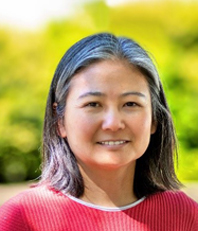
Yayoi Takamura
Affiliation: University of California, Davis, U.S.A.
Bio: Yayoi Takamura received her B.S. from Cornell University in 1998 and her M.S. and Ph.D. degrees from Stanford University in 2000 and 2004, respectively, all in the field of Materials Science and Engineering. She was a postdoctoral researcher at UC Berkeley with Prof. Yuri Suzuki in the Dept. of Materials Science and Engineering before joining the Dept. of Materials Science and Engineering at UC Davis in July 2006. Since July 2020, she has been serving as Department Chair. Her research focuses on the growth of complex oxide thin films, heterostructures, and nanostructures and the characterization of the novel functional properties associated with their interfaces. Prof. Takamura is a recipient of the NSF CAREER Award, the DARPA Young Faculty Award, and the 2020 UC Davis College of Engineering Mid-Career Research Award. Yayoi is a Senior Member of IEEE and her service to the magnetics community includes serving as the General Chair of the 2022 Magnetism and Magnetic Materials (MMM) Conference in Minneapolis, MN, Program Co-Chair of the 2017 MMM Conference in Pittsburgh, PA, Member-at-Large of the American Physical Society’s Topical Group on Magnetism and Its Applications (GMAG). Specifically for the IEEE Magnet Society she is serving as the Membership Chair for the Advisory Committee, and the Associate Chair for Conference Finances for the Conference Executive Committee. She is also an editor for the Journal of Alloys and Compounds and is a member of the Editorial Advisory Board for the Journal of Applied Physics.
Title: Tailoring Magnetic Spin Textures in La0.7Sr0.3MnO3-based Micromagnets
Abstract: The development of next-generation computing devices based on spintronics and magnonics requires an understanding of how magnetic spin textures can be tailored in patterned magnetic materials. Within the wide range of magnetic materials available, complex oxides such as ferromagnetic (FM) La0.7Sr0.3MnO3 (LSMO) and antiferromagnetic (AF) La1-xSrxFeO3 (LSFO) provide an ideal platform for tailoring magnetic spin textures when lithographically patterned as nano/micromagnets. This unique tunability arises due to the strong interactions between charge, spin, lattice, and orbital degrees of freedom. In this talk I will demonstrate how an intricate interplay exists between shape and magnetocrystalline anisotropy energies as well as exchange coupling interactions at LSMO/LSFO interfaces, and therefore, the resulting AF and FM spin textures can be controlled using parameters such as the LSMO and LSFO layer thicknesses, micromagnet shape, and temperature.[1] These spin textures are imaged using x-ray photoemission electron microscopy for a variety of shapes (circles, squares, triangles, and hexagons with their edges oriented along different low index crystallographic directions) with and without their core regions removed (aka donut structures). LSMO nanomagnets were also patterned into artificial spin ice (ASI) structures,[2] where large arrays of nanomagnets are arranged into geometries where all the magnetic interactions cannot be satisfied simultaneously. While one might expect shape anisotropy to dictate Ising states in the nanomagnets, the unique combination of magnetic parameters associated with LSMO enables the formation of both Ising and complex spin textures (CSTs) based on the nanoisland width and spacing. These CSTs consist of single and double vortices and alter the nature of dipolar coupling between nanomagnets, giving rise to exotic physics in the ASI lattices. These studies demonstrate that complex oxide provide a unique platform for engineering FM and AF spin textures for next generation spin-based devices.
References:
[1] Y. Takamura et al., PRL, 111, 107201 (2013), M.S. Lee, Y. Takamura et al., ACS Nano, 10, 8545 (2016); M.S. Lee, Y. Takamura et al., JAP, 127, 204901 (2020)
[2] R.V. Chopdekar, Y. Takamura, et al., PR Materials, 1, 024401 (2017); D. Sasaki, Y. Takamura, et al., PR Applied, 17, 064057 (2022)
-
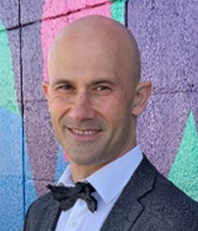
Vitaliy Lomakin
Affiliation: University of California, San Diego
Bio: Vitaliy Lomakin received his M.Sc. in Electrical Engineering from Kharkiv National University (Ukraine) in 1996 and Ph.D. in Electrical Engineering from Tel Aviv University (Israel) in 2003. From 2002 to 2005, he was a Postdoctoral Associate and Visiting Assistant Professor in the Department of Electrical and Computer Engineering, University of Illinois at Urbana Champaign. Since 2005, he has been a Professor of Electrical and Computer Engineering at the University of California, San Diego (UCSD). He has co-authored over 110 journal articles and is a Fellow of IEEE. His research focuses on the development of efficient computational techniques and analytical models for studying multiphysics problems, including electromagnetics, micromagnetics, elastics and first-principles approaches. These techniques are used for the study of magnetic, optical, and microwave materials and devices.
Title: Micromagnetics and multi-physics modelling
-

Eric Fullerton
Affiliation: University of California, San Diego
Bio: Eric Fullerton is a Distinguished Professor at the University of California, San Diego in the Departments of Electrical and Computer Engineering and Chemical and Nano Engineering and is an Endowed Chair and Director of the Center for Memory and Recording Research. He received his B.Sc. in Physics from Harvey Mudd College in 1984 and his Ph.D. in Physics from UC San Diego in 1991. Previously to joining UC San Diego he held research positions at Argonne National Laboratory, the IBM Almaden Research Center and Hitachi Global Storage Technologies. His current research focuses on the synthesis and characterization of magnetic nanostructures, both as a probe of materials in reduced dimensions and for the development of novel information technologies. He has co-authored >420 journal articles, been issued 51 US patents, is a Fellow of the American Physical Society and the IEEE and is a member of the National Academy of Engineering.
Title: Magnetic heterostructures
-
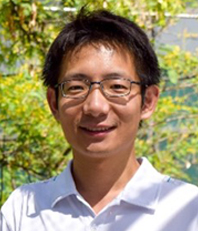
Ran Cheng
Affiliation: University of California, Riverside
Bio: Dr. Ran Cheng obtained his Ph.D. degree in Physics from the University of Texas at Austin in 2014, followed by a postdoc appointment at Carnegie Mellon University. In 2018, he joined the University of California, Riverside, as an Assistant Professor and was promoted to Associate Professor in 2025. He holds joint appointments in the Departments of Electrical and Computer Engineering, Physics and Astronomy, and Materials Science and Engineering. Dr. Cheng leads a research group in theoretical condensed matter physics with a focus on spintronics, magnetism, and topological materials. He explores a broad range of fundamental physical phenomena and their implications in advanced materials, especially in magnetic topological insulators and antiferromagnetic nanostructures. His research is driven by both experimental insights and mathematical intuitions. His work is supported by the DoD MURI Award, the NSF CAREER Award, and funding from the W.M. Keck Foundation.
Title: Fundamentals of Magnetism
Abstract: Magnetism and magnetic materials laid the foundation for a wide range of today’s technologies, from data storage and sensing to emerging quantum devices. In this two-part tutorial, we will explore the fundamental concepts behind magnetism in solids, starting from the microscopic origins of magnetic moments to the complex behavior of magnetic materials under different physical conditions. Part-I introduces key ideas like magnetic susceptibility, exchange interactions, and spontaneous magnetic ordering, followed by phenomenological descriptions of magnetic anisotropy and spin textures. Part-II concerns with how magnetization evolves over time, covering the Landau-Lifshitz-Gilbert equation, magnetic resonances, and manipulating magnetism through spin-transfer torques. This tutorial strives to help students develop physical intuitions and a working understanding of the core principles relevant to modern research in magnetism.
References:
[1] S. Blundell, Magnetism in Condensed Matter, Oxford 2001
[2] S. Chikazumi, Physics of Ferromagnetism, Oxford 2009
[3] J. M. D. Coey, Magnetism and Magnetic Materials, Cambridge 2012
[4] L.D. Landau, E.M. Lifshitz, E.M. Lifshits, and L. Pitaevskii, Statistical Physics (Part 2): Theory of the Condensed State, Butterworth-Heinemann (1980)
-
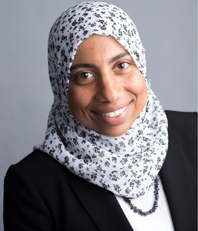
Amal El-Ghazaly
Affiliation: Cornell University
Bio: Amal El-Ghazaly is an Assistant Professor in the department of electrical and computer engineering at Cornell University and an NSF CAREER award recipient. Her work combines magnetism and ferroelectricity to create tunable, versatile electronic systems for telecommunications, sensing and actuation. Prior to joining Cornell in 2019, she was a postdoctoral research fellow at the University of California Berkeley, where she was awarded the University of California President's Postdoctoral Fellowship in 2017. Her postdoctoral research explored new possibilities for ultrafast all-electrical switching of magnetic nanodots for faster and more energy-efficient computer memories. She earned a Ph.D. in electrical engineering from Stanford University, where she was funded by both NSF and NDSEG graduate research fellowships as well as the Stanford DARE fellowship until her graduation in 2016. Her Ph.D. research focused on radio frequency devices using magnetic and magnetoelectric thin-film composites for tunable wireless communications. She received her B.S. and M.S. degrees in electrical and computer engineering from Carnegie Mellon University in 2011.
Title: Functional Magnetic Materials and Devices
Abstract: Functional devices are designed to serve a purpose in our daily lives. But, how do we design them? Engineering functional devices requires, first, understanding the underlying physics and properties of the materials, then building devices that capitalize on those properties to serve the required purpose. Magnetic materials are especially attractive because of their versatile capability of manipulating objects both large and small, near and far. As a result, magnetic materials are key building blocks in many common functional devices today. In this talk, we will discuss just a few applications of magnetic devices in sensing, actuation, and wireless systems. We will begin by discussing the device requirements posed by a given application – sensing of small magnetic fields, actuation of flexible robotic or haptic systems, and communicating wirelessly at microwave frequencies. Then, we will combine our knowledge of magnetism to design the appropriate materials for each device as well as the structure of the functional device itself. By the end of this seminar, students should be able to translate device requirements into both a choice of material and design of its structure to achieve the desired functionality.
Meet the Lecturers
Listed Alphabetically:
Ran Cheng - University of California, Riverside
Randy Dumas - Quantum Design
Amal El-Ghazaly - Cornell University
Eric Fullerton - University of California, San Diego
Ron Goldfarb - National Institute of Standards and Technology (NIST), Boulder, Colorado
Stephanie Hernandez - Seagate
Min-Fu Hsieh - National Chen Kung University, Taiwan
Andrew D. Kent - New York University
Vitaliy Lomakin - University of California, San Diego
Günter Reiss - Bielefeld University, Bielefeld, Germany
Yayoi Takamura - University of California, Davis
Hyunsoo Yang - National University of Singapore, Singapore